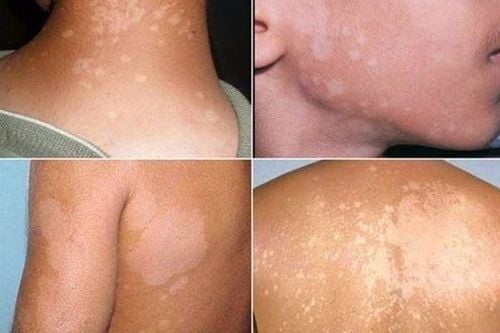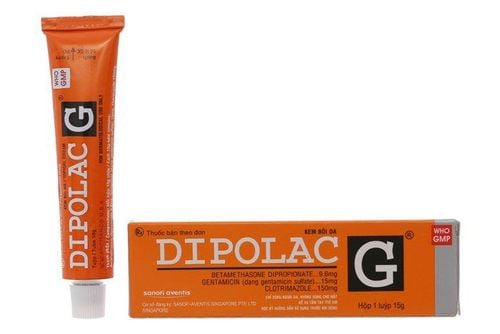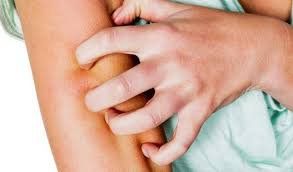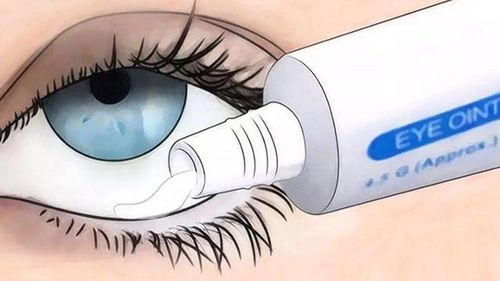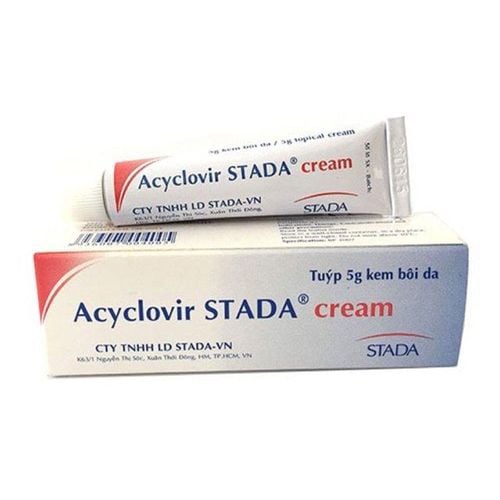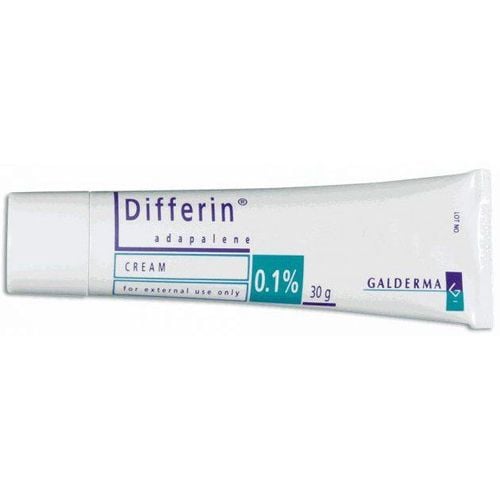This is an automatically translated article.
Erythema multiforme is an immune reaction in the skin caused by an infection or medication. Patients with erythema multiforme can affect any age group, of which 20% are children, and may be mild or severe. Mild erythema multiforme is usually a simple skin rash while severe erythema multiforme can be dangerous and often requires aggressive treatment.1. What is erythema multiforme?
Erythema multiforme is a hypersensitivity reaction usually caused by infection, most commonly the herpes simplex virus (HSV). The disease presents with a skin rash characterized by a typical target lesion; also sometimes affect the mucosa. Patients with erythema multiforme are often acute and self-limiting, which may resolve spontaneously without complications.Erythema multiforme usually affects young adults (20–40 years old); however, all age groups and races can be affected. Among them, men usually predominate.
2. The causes of rosacea are diverse
Infection Infection probably plays a role in pathogenesis in at least 90% of cases of erythema multiforme.The most common infectious agent that causes erythema multiforme is infection with the herpes simplex virus (HSV), most commonly herpes labialis (cold sores on the lips) and less commonly genital herpes. Among them, HSV type 1 is more likely to cause disease than type 2. In sequence, herpes infection usually precedes the skin rash by 3–14 days.
Mycoplasma pneumonia which causes lung infections is the next most common cause.
In addition, many other viral infections have also been reported to cause rosacea multiforme including: Parapoxvirus, Herpes varicella-zoster (causes chickenpox, shingles), Adenovirus, Inflammatory virus liver, Human Immunodeficiency Virus (HIV) or viral vaccination.
Drugs Drugs are probably an uncommon cause (<10%) of cases of erythema multiforme.
Many drugs have been reported to cause erythema multiforme, including barbiturates, nonsteroidal anti-inflammatory drugs, penicillins, sulphonamides, nitrofurantoin, phenothiazines, and anticonvulsants.

Bệnh hồng ban đa dạng có nguy hiểm không là thắc mắc của nhiều người
3. Clinical features of erythema multiforme
General Symptoms There are usually no symptoms typical of all cases of mild erythema multiforme.However, the rash is often preceded by mild symptoms such as fever or chills, weakness or pain in the joints.
Characteristics of skin lesions The typical feature of erythema multiforme is the appearance of several to hundreds of skin lesions that flare up over a 24-hour period.
Lesions are first seen on the backs of hands and/or feet, then spread down the proximal extremities toward the trunk. The upper extremities are more commonly affected than the lower extremities, including the skin on the palms of the hands. However, the face, neck, and torso are the most common locations.
The erythema multiforme lesions are initially well demarcated, round, red or pink and flat (maculoid) and then become raised (papuloform and palpable) continuing to progressively enlarge up to form plaques up to a few centimeters in diameter. The center of the papule or patch is darker and there are changes in the epidermal surface such as blistering or crusting. Lesions usually progress within 72 hours.
Mucosal areas may also appear erythematous, which usually develops several days after the onset of the skin rash. However, in mild erythema multiforme, mucosal or mucous membranes are absent or only mildly affected. If this area is also involved, the possibility of severe erythema multiforme should be suspected.
Accordingly, in severe erythema multiforme, many mucosal sites are affected, usually oral mucosa: most commonly lips, inside cheeks, tongue, rarely on floor of mouth, palate, gums. Furthermore, other mucosal sites affected are the eyes, anus and genitals, trachea, bronchi or gastrointestinal tract.
In severe erythema multiforme, mucosal lesions are not only swollen and red, but also vesicles form, which rapidly rupture leaving large, shallow, irregularly shaped, painful ulcers. The person may have difficulty speaking or swallowing due to the pain.
4. How to diagnose and treat erythema multiforme?
Erythema multiforme is a clinical diagnosis, although a skin biopsy may be indicated to rule out other conditions. In addition, other tests may be done to look for infections commonly associated with erythema multiforme, such as mycoplasma.Regarding the treatment of erythema multiforme, for the majority of cases, the patient does not need treatment because the rash will clear up on its own within a few weeks without complications.
However, some cases may require treatment directed at any cause such as oral aciclovir (not topical) for HSV or antibiotics (eg, erythromycin) for Mycoplasma pneumoniae. If drug-related causes are suspected, the drug should be discontinued.
In addition, supportive treatment or symptomatic relief may be needed. Example:
Itching - oral antihistamines and/or topical corticosteroids may help.
Sore mouth - mouthwash containing a local anesthetic and antiseptic helps relieve pain and secondary infections.

Bệnh hồng ban đa dạng có nguyên nhân chủ yếu là do nhiễm trùng
5. Is erythema multiforme dangerous?
The danger of rosacea multiforme is not primarily related to the body surface area affected. Healing can occur spontaneously in 2 to 3 weeks, but mucosal lesions always take longer. These lesions usually do not leave scars but are frequently dyspigmented. Recurrent erythema multiforme occurs in less than 5% of cases, mainly in the form of herpes infection.The danger of rosacea multiforme in the long run is when there is damage to the mucosa. Eye complications can be serious and lead to blindness. Therefore, special vigilance is needed during the acute phase to prevent these areas of subsequent rash. Accordingly, the prognosis of the disease will depend on the care, especially in two special vigilance situations, which are severe mucosal damage and bacterial superinfection. At this time, possible complications after the rash can occur are sepsis, skin infection (cellulitis), permanent skin damage and scarring, permanent eye damage, and inflammation of internal organs. organs, such as the lungs or liver.
In addition, rosacea multiforme is dangerous when the patient has additional poor prognostic factors, including renal dysfunction, bone marrow transplantation, associated organ damage, and advanced age.
In these cases, rosacea multiforme becomes serious and can be fatal. It is usually caused by a reaction to medication rather than an infection and is also known as Stevens-Johnson syndrome, which manifests as blistering and peeling of much larger areas of skin, affecting mucous membranes, such as the mouth or eyes. .
At this point, the person needs to go to the hospital immediately to control complications, the possibility of dehydration and any infections. These patients are best monitored in the intensive care unit similar to a burn patient. However, exfoliation should be avoided while the lesion is progressing. Abraded lesions should be bathed in Burrow's solution or saline with a non-adhesive dressing. All drugs suspected of causing illness must be stopped immediately.
Re-epithelialization in rosacea multiforme can take 7-21 days. Besides, the issue of nutritional support, temperature regulation is also very important. Thus, if comprehensive care is not ensured, the patient is vulnerable to secondary organ damage, functional impairment and possibly life-threatening.
In a nutshell, rosacea multiforme is a skin condition that reacts to an infection or certain medications. In mild cases, skin lesions usually resolve after 2 to 4 weeks. Doctors will try to identify and treat the cause and may prescribe topical treatments for skin lesions. However, severe erythema multiforme can become dangerous, requiring hospitalization for comprehensive treatment, supporting organs to limit complications that can be life-threatening.
If you have a need for consultation and examination at Vinmec Hospitals under the national health system, please book an appointment on the website (vinmec.com) for service.
Please dial HOTLINE for more information or register for an appointment HERE. Download MyVinmec app to make appointments faster and to manage your bookings easily.




